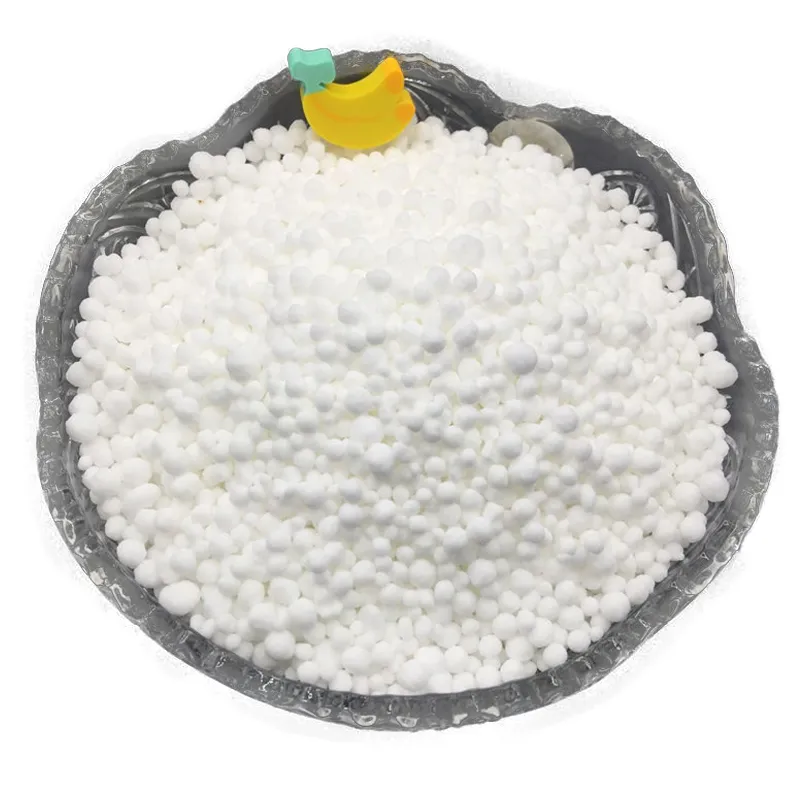
May . 23, 2025 09:21 Listeye geri dön
Nitrogen Fertilizer: Essential for Healthy Crops and High Yields
Nitrogen is one of the most important nutrients in agriculture. It fuels plant growth, boosts chlorophyll production, and plays a major role in achieving strong yields. Choosing the right nitrogen fertilizer — and applying it at the right time — can make the difference between a decent harvest and an exceptional one.

Whether you're comparing types of nitrogen fertilizer for your crops or looking for nitrogen fertilizer for sale in bulk, this guide will help you make the right call.
Why Nitrogen Matters in Farming
Nitrogen is vital for:
Leaf and stem development
Photosynthesis and energy transfer
Protein and enzyme production
Boosting biomass and crop vigor
A nitrogen-deficient plant typically looks pale, stunted, and underperforming. That’s why a solid nitrogen strategy is the backbone of most crop nutrition plans — especially for cereals, vegetables, and forage crops.
Types of Nitrogen Fertilizer
There are several types of nitrogen fertilizer, each with unique benefits and best-use scenarios. Understanding these helps you tailor applications to your soil, climate, and crop requirements.
1. Urea (46-0-0)
Azot İçeriği: 46%
Form: White granules or prills
Use: Most widely used solid nitrogen fertilizer globally
Pros: High concentration, cost-effective
Cons: Can volatilize (lose N as gas) if not incorporated into soil
✅ Best for broadcasting before rain or irrigating in immediately.
2. Ammonium Nitrate (34-0-0)
Azot İçeriği: 34%
Form: Granular
Use: Used in cooler climates
Pros: Quick uptake, less volatile than urea
Cons: Regulated in some countries due to explosive potential
✅ Often used in pastures and forage systems.
3. UAN Solution (28-32-0)
Azot İçeriği: 28–32%
Form: Liquid (Urea + Ammonium Nitrate)
Use: Fertigation and foliar feeding
Pros: Versatile, blends well with other nutrients
Cons: Risk of leaf burn if misapplied
✅ Great for side-dressing and in-season applications via irrigation.
4. Ammonium Sulfate (21-0-0 + 24% Sulfur)
Azot İçeriği: 21%
Form: Crystals or granules
Use: For crops needing sulfur (e.g., canola, onion)
Pros: Adds sulfur, acidifies alkaline soils
Cons: Lower N content means more volume needed
✅ Best for sulfur-deficient soils or alkaline regions.
5. Calcium Ammonium Nitrate (CAN 27-0-0)
Azot İçeriği: 27%
Form: Granular
Use: Topdressing in vegetable or row crop fields
Pros: Low volatility, gentle on crops
Cons: Slightly more expensive than urea
✅ Commonly used in Europe for precision top-dressing.
6. Organic Nitrogen Sources
Examples: Manure, compost, blood meal, feather meal
Use: Organic farming systems
Pros: Improves soil structure and microbial activity
Cons: Lower N content, slower release
✅ Best for long-term soil building and organic-certified operations.
How to Choose the Right Nitrogen Fertilizer
|
Factor |
What to Consider |
|
Crop type |
Leafy crops need more nitrogen; fruiting crops need balance |
|
Soil condition |
Sandy soils may lose N quickly; heavy clay retains it better |
|
Climate |
Warm, humid weather increases nitrogen loss from urea |
|
Application method |
Broadcast, banded, foliar, or fertigation |
|
Budget |
Urea is most cost-effective per unit of N |
|
Environmental impact |
Use enhanced-efficiency fertilizers to reduce runoff |
Nitrogen Fertilizer for Sale: Where and How to Buy
If you’re looking for nitrogen fertilizer for sale, you’ll find it from:
Agricultural cooperatives – Bulk supply with agronomic advice
Fertilizer manufacturers and blenders – Direct sourcing and better rates for large farms
Local distributors – Easier access for small and mid-sized growers
Typical packaging:
25kg or 50kg bags
500–1000kg jumbo bags
Bulk tanker loads (for liquids)
MOQ for bulk orders: Often starts at 10–25 tons depending on the product and supplier.
Nitrogen Fertilizer Price Trends
The price of nitrogen fertilizer varies depending on:
Raw material costs (especially natural gas)
Transportation and fuel prices
Regional supply and seasonal demand
Type of fertilizer (urea is cheaper than CAN or UAN)
Average price estimates (USD/ton as of recent trends):
|
Fertilizer Type |
Bulk Price Range (USD/MT) |
|
Urea (46-0-0) |
$350 – $500 |
|
Ammonium Nitrate (34-0-0) |
$400 – $600 |
|
UAN Solution (28–32-0) |
$300 – $450 |
|
Ammonium Sulfate (21-0-0) |
$180 – $300 |
|
CAN (27-0-0) |
$350 – $550 |
Bulk purchases typically come with discounts based on volume, delivery location, and packaging type.
Nitrogen Fertilizer FAQs
Q1: What’s the best nitrogen fertilizer for vegetables?
A: Urea is effective, but CAN or ammonium sulfate are preferred for topdressing due to lower burn risk.
Q2: Can I mix nitrogen with phosphorus or potassium?
A: Yes, NPK blends are common. Make sure compatibility is tested to avoid caking or nutrient lockout.
Q3: How often should nitrogen be applied?
A: Depends on crop and soil. Typically split into 2–3 applications throughout the season.
Q4: Is nitrogen fertilizer harmful to the environment?
A: Overuse or misapplication can cause runoff and pollution. Use soil testing and precision application methods.
Q5: Can I store nitrogen fertilizer long term?
A: Yes, if kept dry and sealed. Liquid UAN requires temperature control to prevent separation.
No matter the crop, soil, or scale, nitrogen is the fuel that powers plant growth. Understanding the types of nitrogen fertilizer available — and when to use each — gives you the edge in maximizing yield, efficiency, and sustainability.
-
Organic Pepper Fertilizer – Sustainable Growth for Healthier Crops and Soils
HaberlerNov.25,2025
-
Sustainable Growth with Organic Phosphate Fertilizer | Benefits & Innovations
HaberlerNov.24,2025
-
Organic Phosphorus and Potassium Fertilizer: Sustainable Soil Nutrition & Global Impact
HaberlerNov.24,2025
-
Organic Phosphorus Fertilizer: Sustainable Nutrient Solutions for Modern Agriculture
HaberlerNov.23,2025
-
Sustainable Growth with Organic Phosphorus Plant Fertilizer | HH Fertilizer
HaberlerNov.23,2025
-
Organic Plant Meal Fertilizer for Sustainable Agriculture – Benefits & Innovations
HaberlerNov.22,2025
